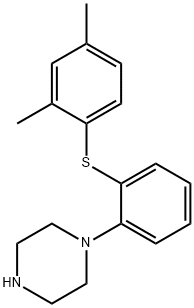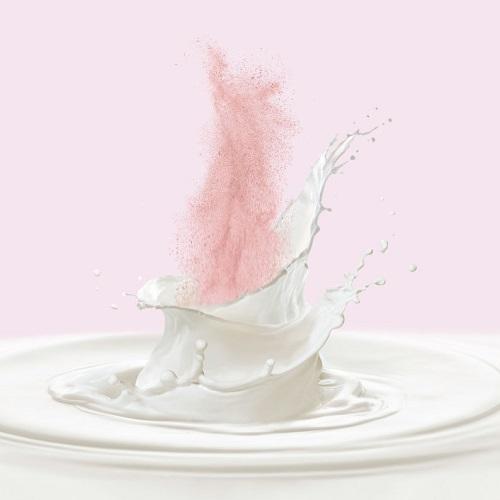The performance of vortioxetine
Introduction of vortioxetine
Vortioxetine is a structurally novel medication that has recently been approved for treatment of major depressive disorder (MDD). This medication is a serotonin reuptake inhibitor that also has a number of other potentially relevant effects on serotoninergic receptors, which may differentiate the drug’s effects from those of current first-line antidepressants, such as selective serotonin reuptake inhibitors (SSRIs) and serotonin norepinephrine reuptake inhibitors (SNRIs).
Areas covered of vortioxetine
This article will review the basic clinical pharmacology of vortioxetine, summarize the major clinical trials that were performed prior to approval by the US Food and Drug Administration (FDA), discuss relevant post-marketing studies of this drug, and offer expert commentary on the significance of this new agent in clinical practice [1]. Pre-approval studies were identified as all randomized, placebo-controlled studies of vortioxetine listed on clinicaltrials.gov. Other referenced studies were identified via a MEDLINE database literature search in August 2015 using the key search terms, vortioxetine and Lu AA21004, combined with additional terms that included pharmacological profile, pharmacokinetics, drug interactions, adverse effects, side effects, safety, major depression, and major depressive disorder. We identified relevant systematic reviews, meta-analyses, randomized trials and preclinical studies of importance.
Expert 0pinion of vortioxetine
Results of placebo-controlled trials suggest efficacy and an overall safety profile comparable to existing first-line antidepressants. The most common side effects are nausea, vomiting and constipation. Results of several studies indicate that vortioxetine may have therapeutic effects on cognition (e.g., memory and executive functioning) that exceed that of standard antidepressants. Disadvantages include cost and the current paucity of long-term efficacy data from large clinical trials. Vortioxetine is currently a good second-line antidepressant option and shows promise, pending additional long-term data, to become a first-line antidepressant option.
The application of vortioxetine for the treatment of major depressive disorder
Vortioxetine, a novel antidepressant for the treatment of major depressive disorder (MDD), is a 5-HT3, 5-HT7 and 5-HT1D receptor antagonist, 5-HT1B receptor partial agonist, 5-HT1A receptor agonist and serotonin (5-HT) transporter (SERT) inhibitor. Here we review its preclinical and clinical properties and discuss translational aspects [2]. Vortioxetine increases serotonergic, noradrenergic, dopaminergic, cholinergic, histaminergic and glutamatergic neurotransmission in brain structures associated with MDD. These multiple effects likely derive from its interaction with 5-HT-receptor-mediated negative feedback mechanisms controlling neuronal activity. In particular, 5-HT3 receptors may play a prominent role, since their blockade i) increases pyramidal neuron activity by removing 5-HT3 receptor-mediated excitation of GABA interneurons, and ii) augments SSRI effects on extracellular 5-HT. However, modulation of the other 5-HT receptor subtypes also likely contributes to vortioxetine's pharmacological effects. Preclinical animal models reveal differences from SSRIs and SNRIs, including antidepressant-like activity, increased synaptic plasticity and improved cognitive function. Vortioxetine had clinical efficacy in patients with MDD: 11 placebo-controlled studies (including one in elderly) with efficacy in 8 (7 positive, 1 supportive), 1 positive active comparator study plus a positive relapse prevention study. In two positive studies, vortioxetine was superior to placebo in pre-defined cognitive outcome measures. The clinically effective dose range (5–20 mg/day) spans ~50 to >80% SERT occupancy. SERT and 5-HT3 receptors are primarily occupied at 5 mg, while at 20 mg, all targets are likely occupied at functionally relevant levels. The side-effect profile is similar to that of SSRIs, with gastrointestinal symptoms being most common, and a low incidence of sexual dysfunction and sleep disruption possibly ascribed to vortioxetine's receptor modulation.
It is possible that in the near future, there will be mass production and marketing of drugs containing vortioxetine, thereby promoting the scientific research and industrial production of vortioxetine. Vortioxetine is hopeful that it will be further used in the treatment of antidepressants in the near future to relieve the mental pain of more depression patients and promote and promote the development of the psychotherapy industry.
Renference
1 K. Ryan Connolly & Michael E. Thase (2016) Vortioxetine: a New Treatment for Major Depressive Disorder, Expert Opinion on Pharmacotherapy, 17:3, 421-431)
2 Connie Sanchez,Karen E. Asin, Francesc Artigas.Vortioxetine, a novel antidepressant with multimodal activity: Review of preclinical and clinical data. Pharmacology & Therapeutics, Volume 145, January 2015, Pages 43-57)
Lastest Price from Vortioxetine manufacturers

US $0.00/kg2025-05-07
- CAS:
- 508233-74-7
- Min. Order:
- 1kg
- Purity:
- 0.99
- Supply Ability:
- 1000kg

US $100.00/kg2025-04-21
- CAS:
- 508233-74-7
- Min. Order:
- 1kg
- Purity:
- 99% Purity (What/sapp: +86 18145728414)
- Supply Ability:
- 1000 Tons/Month


